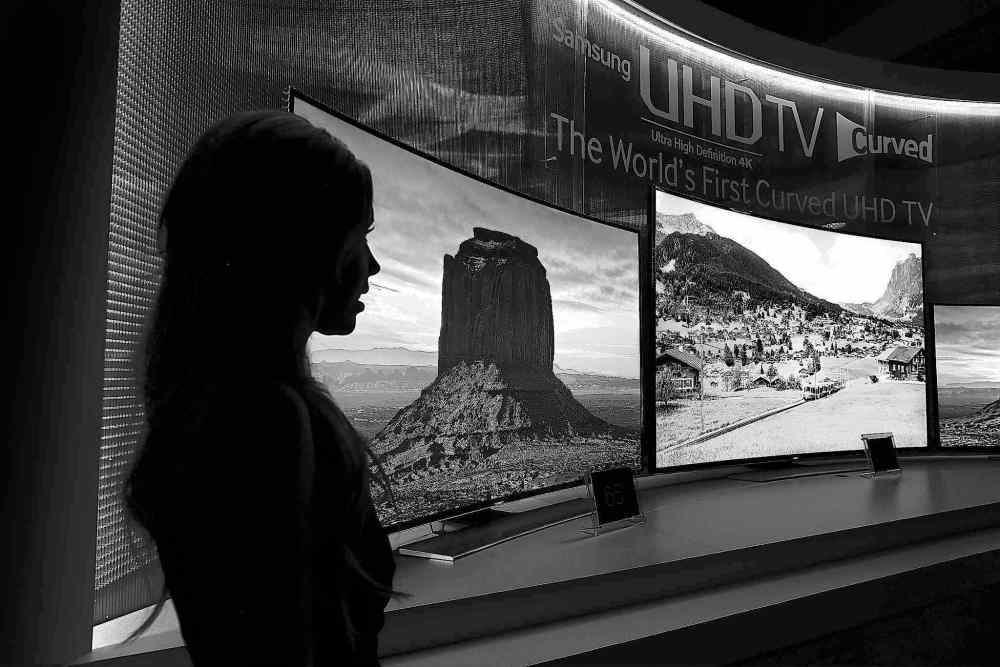Faster, higher… smarter: Deloitte’s tech visionary predicts the future
Advertisement
Read this article for free:
or
Already have an account? Log in here »
To continue reading, please subscribe:
Monthly Digital Subscription
$0 for the first 4 weeks*
- Enjoy unlimited reading on winnipegfreepress.com
- Read the E-Edition, our digital replica newspaper
- Access News Break, our award-winning app
- Play interactive puzzles
*No charge for 4 weeks then price increases to the regular rate of $19.00 plus GST every four weeks. Offer available to new and qualified returning subscribers only. Cancel any time.
Monthly Digital Subscription
$4.75/week*
- Enjoy unlimited reading on winnipegfreepress.com
- Read the E-Edition, our digital replica newspaper
- Access News Break, our award-winning app
- Play interactive puzzles
*Billed as $19 plus GST every four weeks. Cancel any time.
To continue reading, please subscribe:
Add Free Press access to your Brandon Sun subscription for only an additional
$1 for the first 4 weeks*
*Your next subscription payment will increase by $1.00 and you will be charged $16.99 plus GST for four weeks. After four weeks, your payment will increase to $23.99 plus GST every four weeks.
Read unlimited articles for free today:
or
Already have an account? Log in here »
Hey there, time traveller!
This article was published 01/02/2014 (4314 days ago), so information in it may no longer be current.
Somewhere between the off-the-wall prognostications of a futurist and a diligent market researcher who discovers counterintuitive pearls of wisdom lies Deloitte’s annual Technology, Media & Telecommunications (TMT) predictions. Toronto-based Duncan Stewart, Deloitte’s director of TMT research, gives the annual road show — which hit Winnipeg this week — a theatrical flair. There’s just enough gravitas in his presentation to provoke meaningful reflection but a healthy dose of razzle dazzle makes it mostly just fun.
Here are this year’s 10 predictions:
1. The converged living room

A plateau approaches: After a period of the fastest growth ever for consumer electronics, sales of TVs, PCs, game consoles, tablets and smartphones will hit $750 billion this year but will then start to level off. Stewart said almost all these devices have rapidly reached the point where it is hard to make them significantly better. Sales of consumer electronic devices are expected to continue growing — but at a slower rate than over the past 10 years.
2. Wearables: The eyes have it
Deloitte predicts the global market for wearable computers such as Google Glass and smartwatches will be about $3 billion in 2014. But Stewart is not convinced the form and function will really allow this to be mass-marketed. “For the watch screen to be large enough, it will be like strapping a smartphone onto your wrist.” However, he believes there is a potentially huge market for all sorts of applications for the workplace.
3. eVisits: The 21st century house call
Still looking for the killer health-care app (pardon the pun) Deloitte believes straightforward online diagnostics for minor ailments can start saving the North American health-care system about $5 billion per year.
4. Massive open online courses (MOOCs)

Stewart said local universities don’t have to worry about online training courses poaching their target market right now. (Among other things, he said it’s partly because online training programming is so badly produced.) But it’s getting better and more popular and universities will be impacted in the future. MOOCs are expected to grow enormously — up 100 per cent in 2014 over 2012 — while student debt rises dramatically.
5. TV: Those who like it, like it a lot
There are a lot of changes going on in the television broadcast and distribution businesses, but one thing that isn’t changing is the average amount of time we watch TV — in Canada that’s about 27.5 hours per week. People who don’t watch much are watching less and those who already watch a lot are watching more.
6. Doubling up on pay TV
Stewart suggests there have been as many media stories about cable TV cord-cutting as there have been actual cord-cutting. But what is happening is what he calls “cord-stacking.” By year’s end, up to 50 million homes globally will subscribe to at least one pay TV service.
7. Broadcast sports rights: premium plus

You could see this one coming. The rights for live sports broadcasting are becoming more valuable — note the $5.2-billion deal Rogers signed with the NHL — and Stewart believes that means those sports channels will start to become more expensive to subscribe to.
8. The decline of the Canadian cellular voice call?
Voice minutes are still on the rise in Canada, but there are more people talking less. They are called smartphones after all, and communication is happening more via text messaging. Research indicates voice is declining in the U.S. and the U.K. but Stewart believes more information is required to get a better handle on these numbers.
9. Phablets are not a Phad
Stewart says Phablets — the newly coined term to describe those devices that are bigger than a smartphone but smaller than a tablet — are definitely not for everyone. But still, they will sell about $125 billion worth of them in 2014, 25 per cent of the global market. However, most of those sales will be in Asia, where language characters make texting much easier on a larger screen.
10. The smartphone generation gap

Over 55? There’s no app for that — Seniors will be the fastest-growing demographic adopting smartphones across developed markets, but for now those seniors are still using them as dumbphones. About 30 per cent of seniors download zero apps.
martin.cash@freepress.mb.ca

